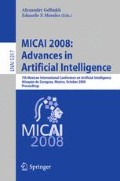Abstract
Titanium alloys are attractive materials due to their unique high strength, excellent performance at elevated temperatures and exceptional resistance to corrosion. The aerospace and military industries are the main users of this material. Titanium alloys are classified as materials difficult to machine. The correct parameters for machining are a hard to determine, and today researches are looking to develop new models to predict and optimize these parameters. The surface roughness (Ra) in turning of a titanium alloy machining Ti 6Al 4V predicted using neural and maximum sensitivity network is shown. The machining tests were carried out using PVD (TiAIN) coated carbide inserts under different cutting conditions. Confidence intervals were estimated in the model to get correct results. There are various machining parameters and they have an effect on the surface roughness. A set of initial parameters in finished turning of Ti 6Al 4V obtained from literature have been used. These parameters are cutting speed, feed rate and depth of cut. This paper shows the results obtained using these neural networks approaches to analyze the variables to model the machining process.
Access this chapter
Tax calculation will be finalised at checkout
Purchases are for personal use only
Preview
Unable to display preview. Download preview PDF.
References
Meziane, F., Vadera, S.: Intelligent systems in manufacturing: current developments and future Integrated manufacturing Systems, vol. 11, pp. 218–238 (2000)
Morales, R., Vallejo, A., Avellan, J.: AI approaches for cutting tool diagnosis in machining processes. In: Proceedings of the 25th IASTED 978-0-88986-629-4, pp. 186–191 (2007)
Pawadea, R.S., Suhas, S., Brahmankar, P.K.: Effect of machining parameters and cutting edge geometry on surface integrity of high-speed turned Inconel 718. International Journal of Machine Tools and Manufacture (2007), doi:10.1016/j.ijmachtools.2007.08.004
He, W., Zhang, Y.F., Lee, K.S., Liu, T.I.: Development of a fuzzy-neuro system for parameter resetting injection molding. Transactions of the ASME 123 (February 2001)
Rico, L., Díaz, J.: Surface roughness prediction at 1018 cold rolled steel using Response Surface Methodology and neural networks. Culcyt Research Year 2(10) (2005)
Russell, S.J., Norvig, P.: Artificial Intelligence: A Modern Approach, 2nd edn., pp. 111–114. Prentice Hall, Upper Saddle River (2003)
Ramesh, S., Karunamoorthy, L., Ramakrishnan, R.: Modeling for prediction of surface roughness in machining of Ti64 alloy using response surface methodology. Journal of Materials Processing Technology (2007), doi:10.1016/j.jmatprotec.2007.11.031
Che-Haron, C.H., Jawaid, A.: The effect of machining on surface integrity of titanium alloy Ti–6% Al–4% V. Journal of Materials Processing Technology 166, 188–192 (2005)
Molinari, A., Musquar, C., Sutter, G.: Adiabatic shear banding in high speed machining of Ti–6Al–4V: experiments and modeling. International Journal of Plasticity 18, 443–459 (2002)
Krain, H., Sharman, A., Ridgway, K.: Optimization of tool life and productivity when end milling Inconel 718 M. Journal of materials processing technology 189, 153–161 (2007)
Kopac, J., Bahor, M., Sokovic, M.: Optimal machining parameters for achieving the desired surface roughness in fine turning of cold preformed steel workpieces. International Journal of Machine Tools and Manufacture, 42707–42716 (2002)
Oktem, H., Erzurumlu, F.: Prediction of minimum surface roughness in end milling mold parts using neural network and genetic algorithm Materials and Design. Journal 27, 735–744 (2006)
Egiazaryan, S.K., G.G.: Theory of functional systems in the scientific school of p.k. anokhin. Journal of the History of the Neurosciences 16(1-2), 194–205 (2007)
Anokhin, P.: Biology and Neurophysiology of the Conditioned Reflex and Its Role in Adaptive Behavior. Pergamon, Oxford (1974)
Anojin, P.K.: Psicología y la filosofía de la ciencia: Metodología del sistema funcional. editorial Trillas, México (1985)
Red’ko, V.G., Prokhorov, D.V., Burtsev, M.S.: Theory of functional systems, adaptive critics and neural networks. In: Proceedings of IJCNN, pp. 1787–1792 (2004)
Torres-Treviño, L.M.: Controladores dinámicos con la red neuronal de máxima sensibilidad. Master’s thesis, Autonomous University of san Luis Potosi, San Luis Potosí, México (1998)
Carlos González González y Ramon Zeleny, Metrología Dimensional. Mc Graw Hill
Kim, B., Kim, S.: GA-optimized back propagation neural network with multi-parameterized gradients and applications to predicting plasma etch data. Chemometrics and Intelligent Laboratory Systems 79, 123–128 (2005)
Basheer, I.A., Hajmeer, M.: Artificial neural networks: fundamentals, computing, design, and application. Journal of Microbiological Methods 43, 3–31 (2000)
Author information
Authors and Affiliations
Editor information
Editors and Affiliations
Rights and permissions
Copyright information
© 2008 Springer-Verlag Berlin Heidelberg
About this paper
Cite this paper
Escamilla, I., Torres, L., Perez, P., Zambrano, P. (2008). A Comparison between Back Propagation and the Maximum Sensibility Neural Network to Surface Roughness Prediction in Machining of Titanium (Ti 6Al 4V) Alloy. In: Gelbukh, A., Morales, E.F. (eds) MICAI 2008: Advances in Artificial Intelligence. MICAI 2008. Lecture Notes in Computer Science(), vol 5317. Springer, Berlin, Heidelberg. https://doi.org/10.1007/978-3-540-88636-5_95
Download citation
DOI: https://doi.org/10.1007/978-3-540-88636-5_95
Publisher Name: Springer, Berlin, Heidelberg
Print ISBN: 978-3-540-88635-8
Online ISBN: 978-3-540-88636-5
eBook Packages: Computer ScienceComputer Science (R0)

